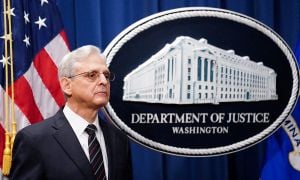With Donald Trump back on the political stage, his recent appointment selections are turning heads and sparking discussions. His return to the White House isn't just about having another go at presidency; it seems he’s assembling what could be anticipated as his most unconventional cabinet yet. Following the tumultuous events leading to his previous administration's end, it remains to be seen how these choices will govern and influence both policy and public sentiment.
Let’s step back and gaze at the lineup. Among his appointments, Trump made headlines when he chose Florida Senator Marco Rubio as Secretary of State—a position carrying immense weight considering the current global climate. Rubio, known for his foreign policy experience and connections, has been vocal about his international interests, particularly concerning China and Russia.
Another audacious pick was Robert F. Kennedy Jr., selected to head the Department of Health and Human Services. This decision surprised many, not only for Kennedy’s political lineage but also due to his controversial stances on vaccines, which have drawn scrutiny over the years. Some wonder how his unique perspective will shape health policy, especially with the impact of the COVID-19 pandemic still fresh.
On the financial front, Trump nominated Scott Bessent for Secretary of Treasury. With extensive experience managing funds and investments, Bessent's role could focus on stabilizing the economy and addressing inflation concerns. Given how the economy has fluctuated since the pandemic, the market will watch closely to see how his strategies take shape.
Trump’s selection of Elsie Whitman as Chief of Staff also ruffled some feathers. Whitman, known for her no-nonsense approach and occasional off-the-cuff remarks, may set the tone for Trump’s administration much like her predecessor did but with perhaps, even more, fervor. Some political analysts view her appointment as a strategic move to navigate the complex dynamics of Trump’s team.
Interestingly, two familiar names returned to Trump’s circle: Tom Homan, appointed as Border Czar, brings his experience from his past roles heading Immigration and Customs Enforcement. His appointment reflects Trump’s continued emphasis on immigration reform—one of the hallmarks of his original campaign.
Often titled “Dogecoin” due to the emphasis on efficiency, the newly fashioned Department of Government Efficiency will be co-led by billionaire tech innovator Elon Musk and entrepreneur Vivek Ramaswamy. This is yet another sign of Trump’s intent to shake things up; the focus on eliminating waste and streamlining governmental processes might appeal to his base leaning toward pragmatic governance. Yet, will their backgrounds feed progress or produce friction?
Not all decisions have been smooth sailing. Facing backlash from various quarters, Trump’s first Attorney General choice, Matt Gaetz, withdrew his nomination amid serious allegations, including investigations pertaining to sex trafficking claims, which he has publicly denied. Following this hiccup, he appointed Pam Bondi, former Florida Attorney General, to the role, which many see as reclaiming conservative ground amid resistance.
These appointments are positioning Trump’s administration as potentially more daring compared to previous ones, particularly concerning figures from outside traditional political settings. Out of the 36 high-profile positions Trump has identified, he has already filled 32—indicating his fervency to shape his administration swiftly and decisively before the Senate confirms the appointments.
Let’s break down the broader impact. Running these selections is Trump’s inherent strategy rooted deep within his brand of politics: steering clear of political normativity. His emphasis on outsider perspective—those he feels are not politically entrenched—echoes his successful electoral strategies of yesteryear.
The immediate question arises: how will these appointments resonate with Americans, especially if they are already polarized over issues of governance and the pandemic response?
Analysis points to the challenges Trump faces, from unifying the divides within his party, to addressing the policies of the current administration which he condemns. Many of his picks suggest he’s sharpening focus on regulatory rollbacks, alongside budgetary constraints, especially under the looming shadow of inflation.
Looking at the electoral strategy heading to 2024, these appointments are decidedly crafted to embolden Trump’s base. His selections appear aimed at energizing those who feel disenfranchised and rallying reformist sentiments. But can this still work after such turbulent political terrain?
The subsequent focus will clearly lie on how these individuals perform under pressure: steering on immigration, health regulations amid continued debates breathing life throughout the nation, and trade negotiations. The intersection of turmoil and fervor shapes the path to the 2024 elections more than many thought back when he first announced his candidacy.
The political atmosphere remains electric. Whether these appointments will serve as mere bookmarks to his political saga or shape him decisively as he faces off against opponents off the GOP spectrum remains to be seen. This cabinet—quixotic, unearthed from conventional political arenas—could very well propel or capsize the second act of Trump’s storied political career.
Either way, as confirmation hearings approach, all eyes on Capitol Hill will be monitoring the dynamics of approval and potential pushbacks—setting the stage for what seems to be yet another wild chapter of American politics.
Short and bold, Trump's appointments paint the picture of ambition interlaced with unpredictability. Can they back up Trump’s vision or simply be another phase of his chaotic political theater? Only the coming months will reveal this narrative, rich in potential but fraught with uncertainty.


